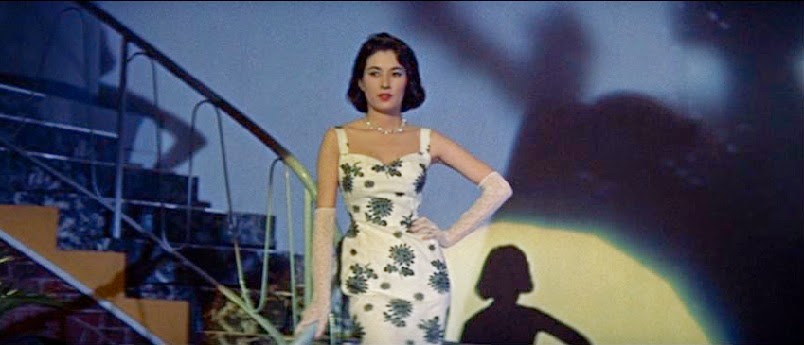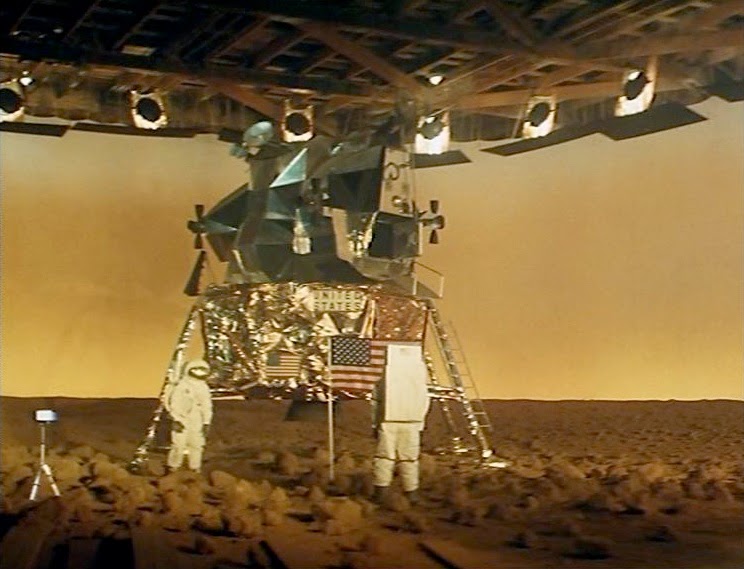Cat Girl is a 1957 British horror film clearly inspired by the 1942 Val Lewton classic Cat People. It will come as no surprise that Cat Girl fails to live up to its predecessor but having said that it’s still worth a look, mostly for the performance of star Barbara Shelley.
Leonora Johnson (Barbara Shelley) has been summoned to the lonely country house of her uncle Edmund Brandt. Leonora had been brought up by her uncle after her father’s death and she has unhappy memories of this house. She is however her uncle’s heiress and her scheming husband Richard (Jack May) is determined that Leonora should do nothing to endanger her inheritance.
That inheritance turns out to be her share in the family curse. As her uncle explains to her the Brandts have a dual nature, both human and animal. They are not quite werewolves but something similar. The animal part of their nature is physically separate from them and takes the form of a leopard, but they experience everything that the leopard experiences. And they share in its kills.
Things are already tense between Leonora and her husband. He no longer troubles to conceal the fact that he is having an affair.
Leonora herself is in love with Dr Brian Marlowe (Robert Ayres), and has been since she was a girl. Dr Marlowe is now a successful psychiatrist and he believes he can help Leonora, who has been showing signs of increasing disturbance. She tries to explain the family curse to him, and that she is part woman and part leopard. He naturally dismisses this as a psychosis, presumably fueled by her jealousy of Dr Marlowe’s wife Dorothy and her anger towards her two-timing husband.
When Leonora’s husband is found torn to pieces, apparently by a wild animal, Leonora confesses that she was the killer. Of course no-one believes her, given that the injuries her husband suffered could only have been inflicted by an animal such as a leopard.
Dr Marlowe persuades Leonora to admit herself to a sanitarium. After a few days he is convinced that she has overcome her unfortunate delusions and is now cured. To celebrate her cure he decides that Leonora should have a day out with Dorothy. He will meet them both later for dinner, late at night and in a lonely part of London down by the docks. You might wonder about the professional competence of a psychiatrist who thinks it’s a good idea to allow his wife to be roaming about in the middle of the night with a recently discharged mental patient who had been suffering from violent fantasies of jealous rage towards her. Dr Marlowe is however an expert and he feels no anxieties about this situation. Well not at first anyway.
This movie, like Cat People, adopts a deliberately ambiguous approach. Leonora could be a young woman who stalks and kills prey in the form of a leopard, or she could be a young woman suffering from delusions of being a leopard woman. In fact Cat Girl is marginally more effective in its efforts to avoid resolving those ambiguities. As in Cat People it is clear that sex and sexual anxiety and sexual jealousy play a very major part in explaining the human-animal dualism of the heroine.
Cat People had been filmed in a very definite film noir style and the director of Cat Girl, Alfred Shaughnessy, favours a similar approach. It goes without saying that he cannot match the moody intensity and the stylistic brilliance that Jacques Tourneur brought to Cat People, and Peter Hennessy’s cinematography is a pale shadow of Nicholas Musuraca’s stunning camerawork in the 1942 film.
Where Cat Girl does score heavily is in the casting of its leading lady. Barbara Shelley really is superb. She is extremely sexy in a very perverse and disturbing way and she conveys an extraordinary sense of menace. The audience will have no difficulty in believing that this woman is dangerous. Shelley is in fact far more effective than Simone Simon had been in Cat People. Shelley would go on to become Hammer’s leading scream queen.
Network DVD’s Region 2 release offers an exceptionally good transfer. There are no extras but the very low price makes this an attractive buy.
Cat Girl might be a poor man’s Cat People but it’s an entertaining enough horror B-movie and Barbara Shelley’s performance makes it very much worth seeing. Recommended.






























